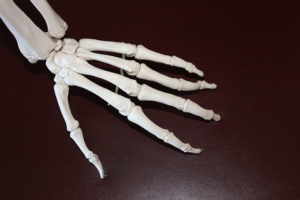What Psoriatic Arthritis Symptoms Feel Like – Healthline
You may have been wondering if your itchy skin and achy joints add up to psoriatic arthritis (PsA). But lists of tongue-twister symptoms like “dactylitis,” “enthesitis,” and “spondylitis” may make you feel like you need a Latin dictionary before you can even think about finding a rheu…….

You may have been wondering if your itchy skin and achy joints add up to psoriatic arthritis (PsA). But lists of tongue-twister symptoms like “dactylitis,” “enthesitis,” and “spondylitis” may make you feel like you need a Latin dictionary before you can even think about finding a rheumatologist.
While understanding the proper medical terms is helpful, you first need a clear picture of what PsA symptoms really feel like. Having this information will help you gauge whether what you’re experiencing warrants a Q&A with your doctor and what steps to take for treatment.
PsA is an inflammatory autoimmune condition that affects about 20 percent of people who have the skin disease psoriasis. Sometimes PsA develops without a prior diagnosis of psoriasis, but there are almost always associated skin symptoms.
PsA affects men and women equally, runs in families, and usually starts after age 30 (though people of any age can be affected).
In autoimmune diseases like PsA, your immune system mistakenly targets healthy tissue. The result? Inflammation and tissue damage.
The key signs of inflammation are pain, swelling, redness, and heat — but how can you tell if your symptoms point to PsA or another condition?
According to the Arthritis Foundation, doctors can diagnose PsA based on:
- a thorough evaluation of your symptoms and medical history
- lab tests to rule out rheumatoid arthritis
- X-rays to look for joint damage
Like most diseases, PsA affects different people differently.
Your symptoms may be mild to severe. And because PsA comes in phases of flares and remission, the symptoms will not always be the same.
Here’s a guide to PsA symptoms and what they might feel like.
Pain
PsA pain most often affects large joints, like your knees, and peripheral joints in your fingers and toes.
Pain in your spine is less likely but not impossible. If you do have spine pain, it will likely be in your lower back (just above the tailbone) or in your neck. You may also feel pain in your heel or the bottom of your foot because of inflammation where ligaments attach to bones.
Swelling
Notice if you have swelling around the painful joint. Entire fingers and toes may sometimes swell and look “sausage-like.” Affected joints may look red or feel warm, other clues that inflammation is present.
Tenderness
While pain is a hallmark of PsA, it may go beyond an ever-present ache or pain associated with moving the joint. Inflamed joints could be tender to the touch, meaning you’ll experience more pain if you bump or press on the body part.
…….
Source: https://www.healthline.com/health/psoriatic-arthritis/symptoms-pain-and-management







